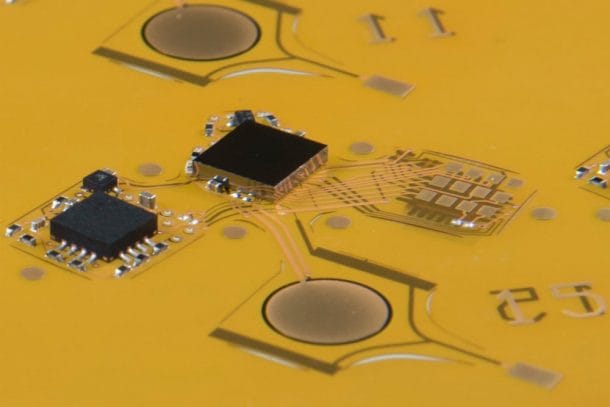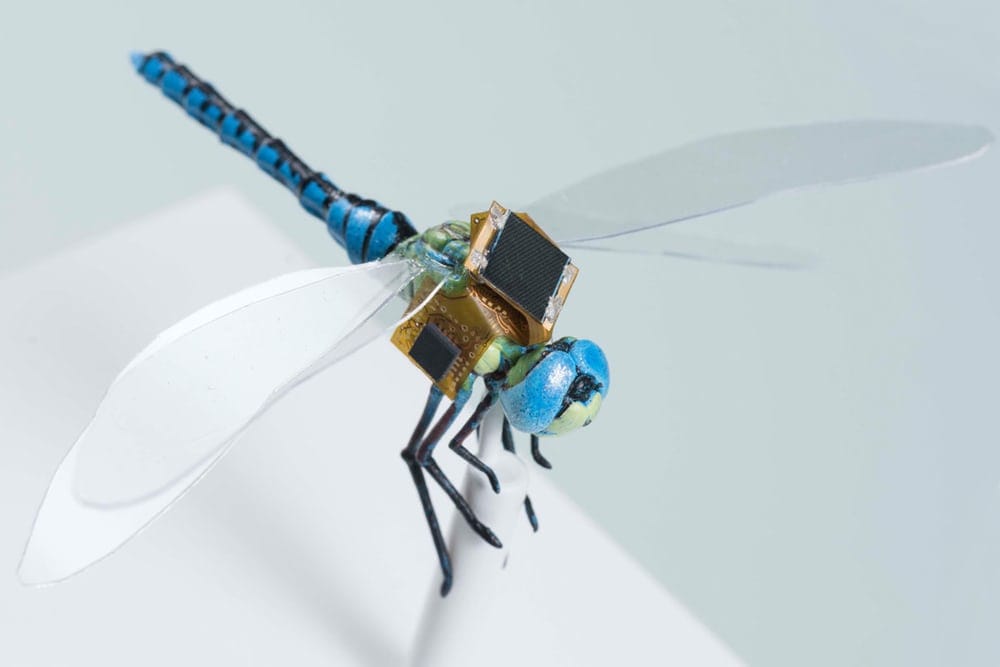Long gone are the times when cyborgs were only seen in sci-fi movies. After the use of driven insects, like cyborg cockroaches and locusts, cyborg sniffer dogs, the latest research in micro UAVs has managed to control real life dragonflies and turn then into mini surveillance robots!
Researchers from the Charles Stark Draper Laboratory and the Howard Hughes Medical Institute (HHMI) have successfully designed a robotic system that can take control of a living dragonfly. The project DragonflEye can be fitted like a backpack on the dragonfly, which allows the engineers to steer it remotely and perform tasks which any impressive robot would envy, like delivering payloads, conducting reconnaissance and even guiding the pollination process.
The astonishing technology is called optrodes that work like little, flexible fiber optic cables. These cables are inserted directly into the dragonfly’s nerve cord, which can then direct the insect at a sub-millimeter scale using light signals. Thus, it steers the insect just like a remote-controlled drone.

The HHMI team has also created genetically modified dragonflies which use steering neurons to respond to light and allow commands to be issued by sending pulses of light from the optrodes. The whole system can fit on the dragonfly’s back and is precise enough to only fire desired neurons without affecting other insects around it.
Jesse J. Wheeler, the project’s principal investigator, talked about this novel invention,
“DragonflEye is a totally new kind of micro-aerial vehicle that’s smaller, lighter and stealthier than anything else that’s manmade. This system pushes the boundaries of energy harvesting, motion sensing, algorithms, miniaturization and optogenetics, all in a system small enough for an insect to wear.”
The cyborg is now put up for use in the military realm for reconnaissance or stealth operations, but the system also has the potential to serve in a public-focused domain. For example, the daunting threat to our food supply triggered by the declining bee populations could be halted by fitting the system on honeybees and monitoring their health and migration patterns to create better pollination environment. The optrodes can also have applications in the human brain and lead to a new world of targeted therapies.
Wheeler adds,
“Someday these same tools could advance medical treatments in humans, resulting in more effective therapies with fewer side effects. Our flexible optrode technology provides a new solution to enable miniaturized diagnostics, safely access smaller neural targets and deliver higher precision therapies.”
What are your thoughts on the incredible optrodes system? Comment below!


